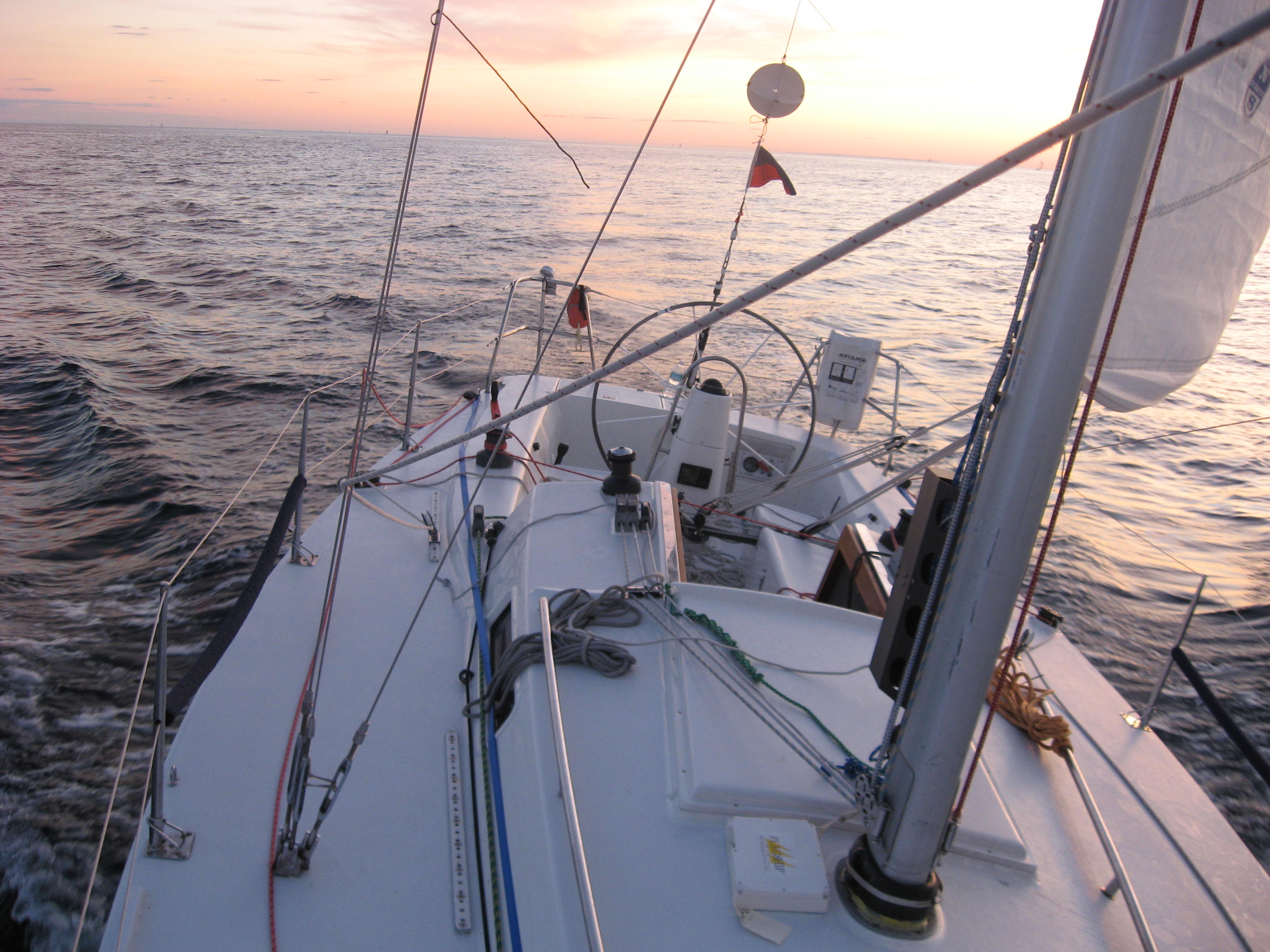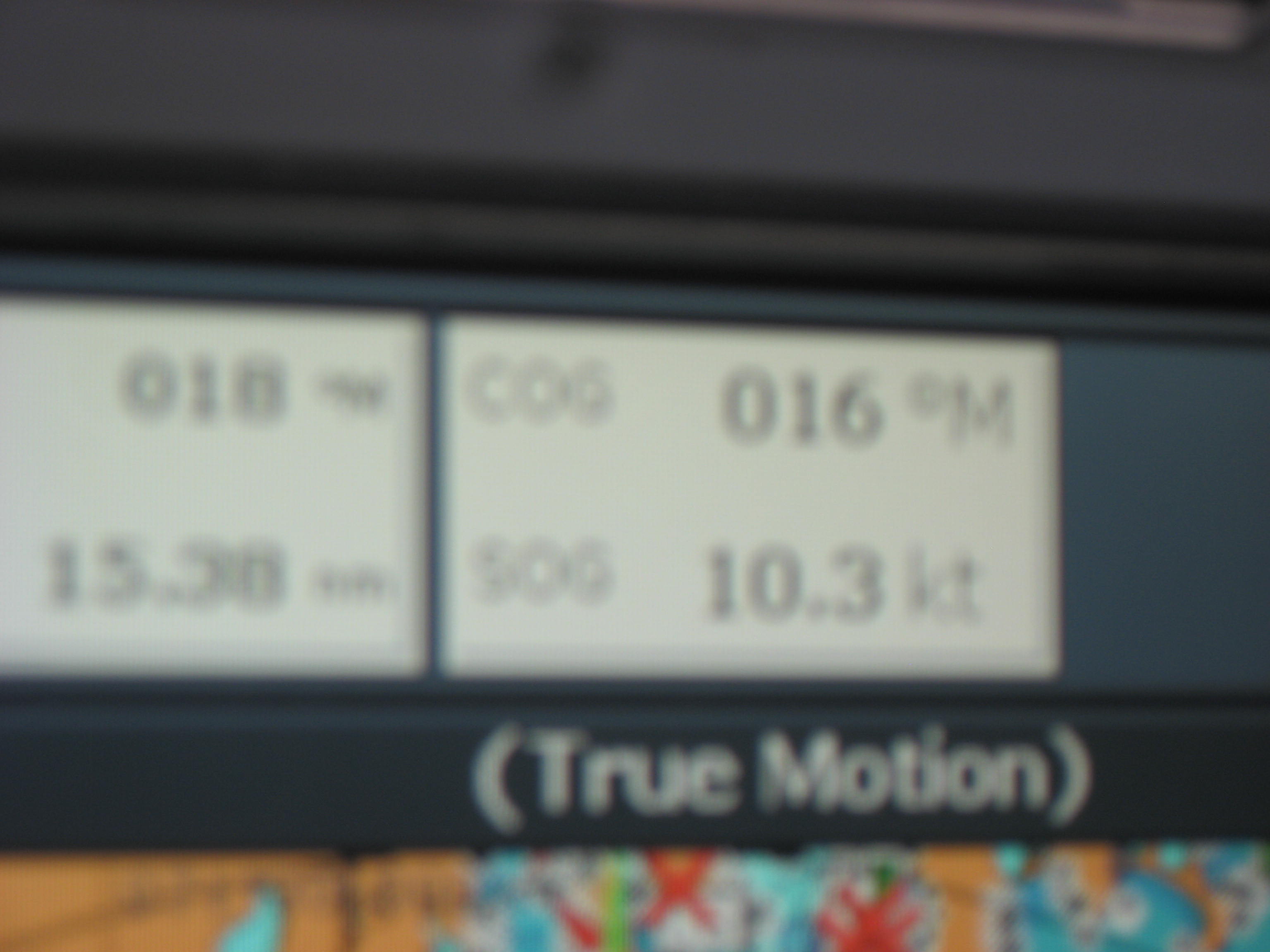A Solent stay is an excellent way to get a heavy weather Jib or a Storm Jib rigged on your boat. This post will discuss another layer of rigging issues as posed by a fellow from the LinkedIn group. The personal names refer to the people in the discussion topic on LinkedIn.
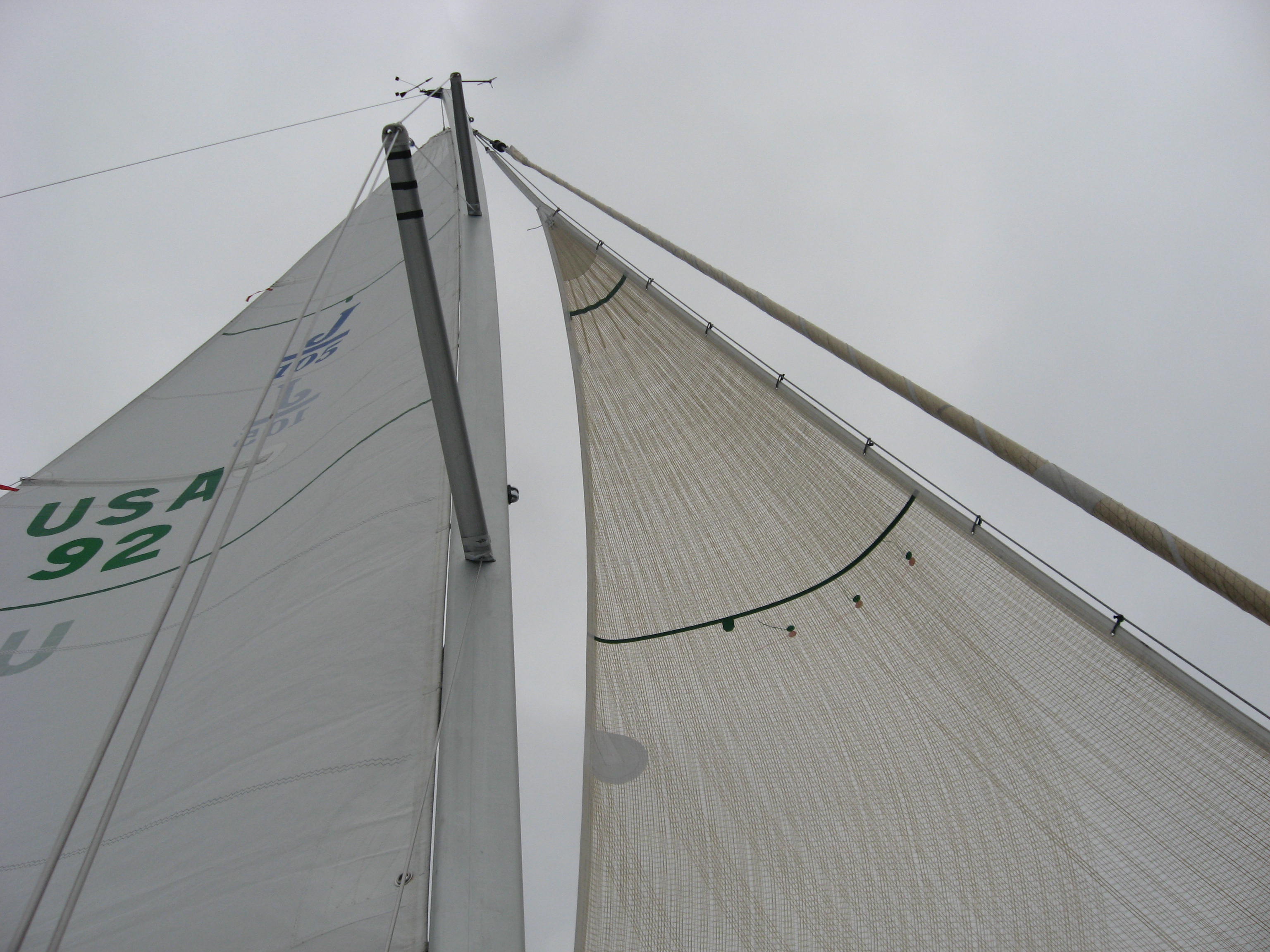
A Solent stay is a great way to get a smaller sail set when it is too windy for the Jib on the furler.
Several issues will be discussed here:
- Spar and deck integrity
- Aspect ratio of the headsails
- Running backstays
Implicit in this essay and the above issues is the design of the boat and in particular the size of the fore-triangle, in absolute terms and relative to the overall length of the boat.
I am answering a question from a LinkedIn group discussion here since my response on the group was way to long for the comments section and I cannot post images. So this post will read a bit more like a monologue that the usual Blog Post Essay style.
The answers I wanted to post on LinkedIn begin here:
Gentlemen,
To continue on the subject of how to set what kind of small sails for when it is blowing too hard for the bigger ones.
Some points for discussion:
- Pad eyes ripping out
- Inner staysail stay (& Runners?)
- Aspect ratio, again
- One alternative
Pad eyes ripping out
Graham is correct. You must make certain beyond any doubt that the structure at the deck termination of the stay is absolutely capable of taking the load. Not merely the load of the stay tension but the dynamic load of the boat bashing off waves etc. (Please review the images below taken from a Quest 30 set up for single and double-handed sailing in the ocean) Simply because there is a “bulkhead” there, does not mean for a moment it is a true structural member capable of withstanding the loads imparted when sailing in 30 plus knots. Far more often it is merely masking the forward part of the forward cabin from the anchor rode etc. so merely glued in to make the interior look nice. I had this exact situation on a delivery with a Santa Cruz 52 one time. We pulled the padeye out of the deck along with a bit of deck while sailing with the SSL in only about 30 knots and modest seas. Upon subsequent inspection we discovered that the forward “bulk head” was just what I described above, a way to make the forward cabin look nice. Virtually no structural content, yet someone had landed the staysail fittings there….

This image is inside the anchor well on the Quest 30. As you will see the furler is under the deck in the anchor well.We took the primary pin securing the headstay to the boat and attached the eye that is seen here. The piece of string is part of the method we used to align the hole in the deck so the strop would be as straight and parallel with the stay as we could manage.
This issue of local structural strength is one of the reasons I often advocate for the stay to be at the bow because in variably the forward part of the boat, where the head stay lands is strong both in terms of layers of materials but the angular nature of the bow, provides lots of strength through the structural geometry.
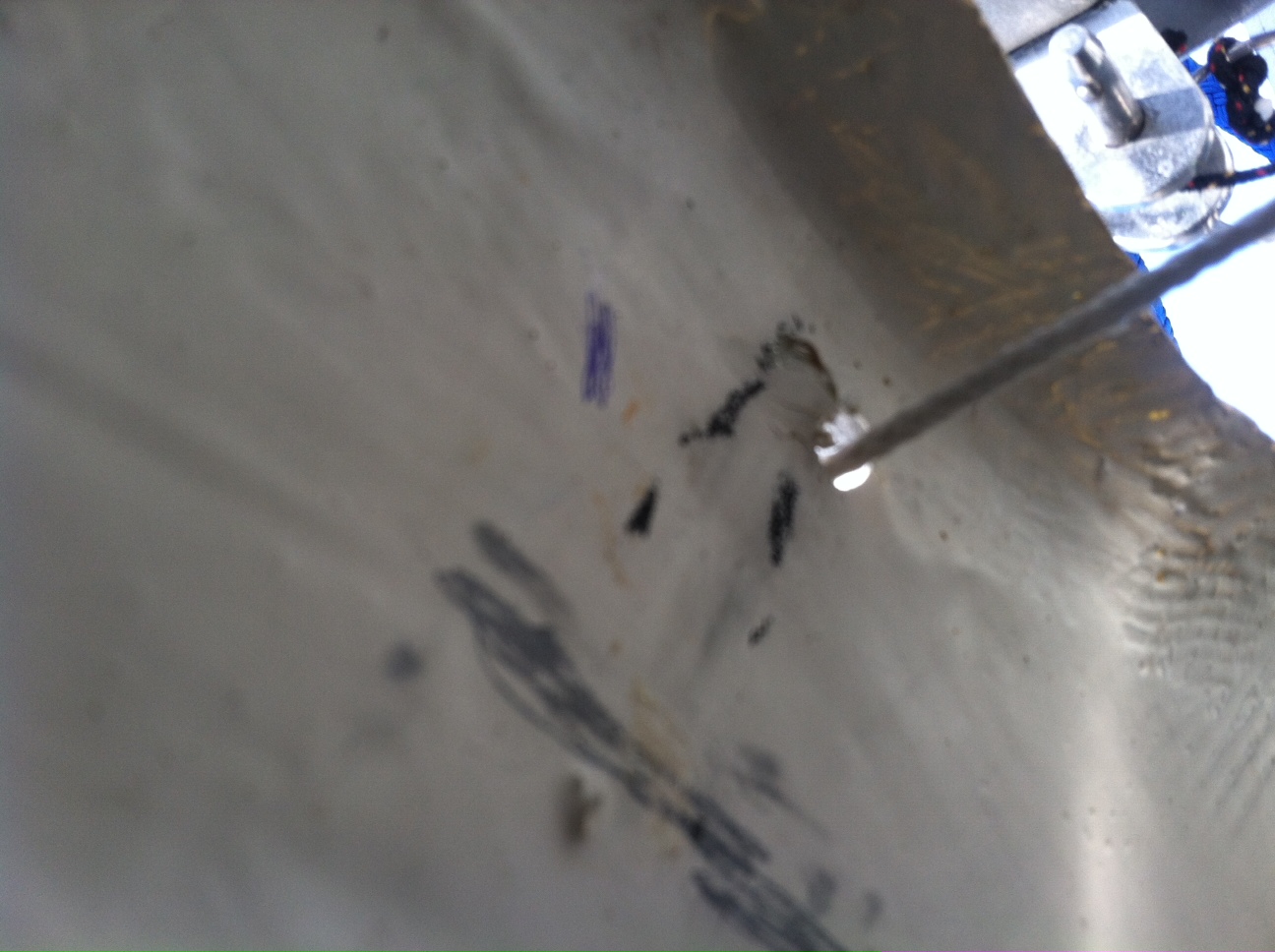
We spent a lot of time measuring angles to get the position of the hole in the deck right.

The staysail stay passes through the deck (and into the anchor well) just aft of the headsail furler. You can see we lined the hole we made in the deck with a plastic through hull and used a textile strop connected to the eye seen in the picture above.
This is what the strop looks like attached to the adjustment tackle on deck:

Here you can see the strop passing through the deck to the eye on the primary headstay pin seen in the images above We got the alignment of the whole arrangement pretty good. The strop is only just bearing on the aft edge of the hole.
Inner Stay and Runners:

This image is of the inside stay arrangement on the Quest 30. It is NOT a Solent as in a sail that is parallel to and just aft of the headstay. Rather it is an inside staysail stay, a staysail stay, a storm staysail stay, choose your name. The idea is that it provides for a smaller sail for use when the one on the furler is too much.
In the images above, the salient points are:
- Smaller sail set on hanks when the furling headsail is too much
- The hardware for this sail was already on the mast
- Using the pad eye on the deck, seen above just aft of the stbd. stanchion made the aspect ratio AND the size of the sail too great and small respectively. (Refer to the Power Point link further on in this post)This is relative because you do not want too much of a jump in sail area between sails other wise there is a gap in the “gear box” as I refer to it as.
- It later transpired that we discovered the pad eye was intended for a spinnaker staysail which of course see a lot less load.
Timo: I do not know so far if: a) your boat already has an inside stay-a stay originating from a point on the spar about the location of the spreaders, and b) if so is it already set up with a stay, a halyard and so on?
If so, then I again advocate for the base of the stay and so the sails tack fitting to be as forward as possible.(as in the image above) For the reasons previously outlined. BUT be very careful with the mast. If there is for instance a Spinnaker pole topping lift sheave and line at about the right place. Almost for sure the sheave and related structure for a spinnaker pole topping lift is inadequate to carry the loads of a heavy weather stay.
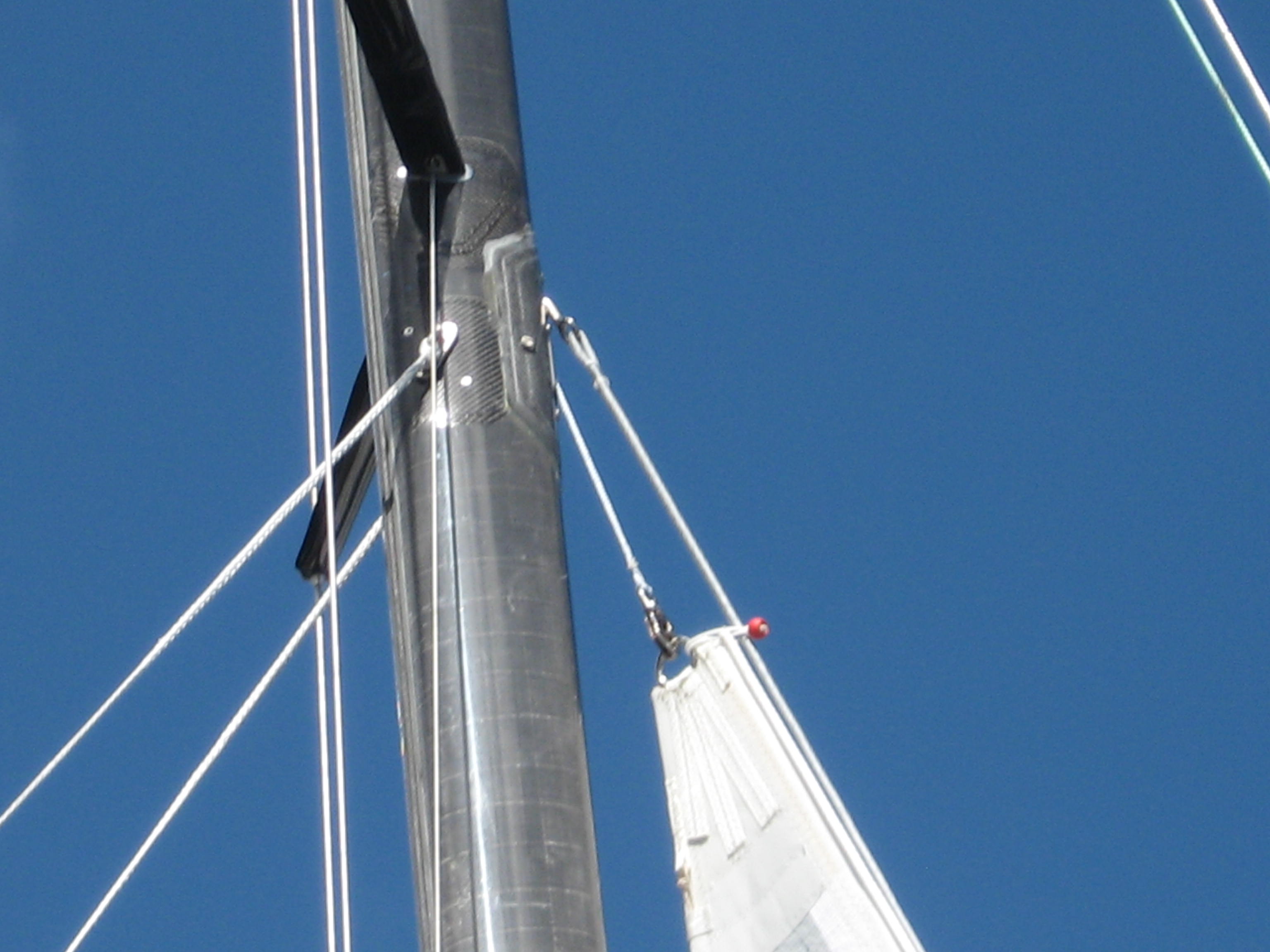
Staysail stay attachment point on the spar and runner take offs. The necessary components for the staysail to be attached to the spar are seen here. Stay attachment-Via a T fitting into the spar, the halyard sheave box and halyard, and attachment points for the runners. Note too that the spar has been reinforced in the way of all this
If not, then the issues surrounding installing such rigging are roughly the same as for a Solent stay set up except that you will need to add running backstays too. This may be complicated by the location of the spreaders so you may want to move the ideal location for the stay and halyard away from the spreaders area-Too many holes for one thing.
Aspect ratio:
I had previously mentioned that the Aspect Ration of the Avance 36 fore triangle is over 3:1. I have done some rudimentary calculations and your Self Taking jib is even higher. This is because the 3:1 number originated with the boat’s specified “I” and “J” dimensions. The actual sail dimensions are shorter on the luff and much shorter on the foot. The latter because if the sail sheets to a track, self tacking track, then the clew will be further forward than if the sail sheeted to a track on the deck like “ normal”. I have an old essay on this issue I will post as soon as I can find it.
This link, below is to a 4 slide power point presentation on this Aspect Ratio Question in particular as it applied to the Quest 30. It was prepared by Mark Washeim at Doyle Sails Long Is. (New York) who worked with us on this sail/rigging/seaworthiness discussion
millard hvy staysail 042413
One alternative:
Depending on a few variables like: how confident are you, with whom do you sail, where, how athletic are you and a few more, a way to address your original question: “What to do when it blows harder than the roller furling jib is suitable for?”One answer is to convert the boat back to hanks…..What you say? Give up my roller furling?
Well sailing as you know is a trade of. You know what the trade offs are with the furler. Some of the nice aspects of a sail with hanks are:
- Nicer sail shape, the Jib can have battens and look like a real Jib.
- When not sailing close hauled but say close reaching-say 40-80 degrees apparent wind angle, it is possible to rig up a rail lead and so help the sails shaping.
- With a hank on Jib, it can have a reef like a mainsail-the mechanics are the same as for a reef in the mainsail and any sailmaker worthy of the name can do it.
- The sail can be a bit bigger, because there are not deductions for the furler and the clew can be further aft, depending on the location of the headsail track.
- When you need/want to sail in harder wind, you can have the sail that is designed for the conditions, small flat strong etc.
- Less windage if you have to anchor in hard wind.
- Less or not chance really of the sail coming partially unfurled in string wind while you are at work. (Something I have seen too)
- Hanks are way more reliable that ANY Furler (or its furling line…)
Some points AGAINST reverting to a hank on headsail.
- What do I do in winds under say 10 knots?”
- I have to go to the bow to change sails in wind and waves
- Where do I put the sails?
- I have to put it on and take it off every time I want to go sailing-I cannot just unroll it.
Some THOUGHTS on the against list:
- Under to knots you can use a light air headsail made from heavy nylon and with a strong textile rope in the luff and no hanks. This sail is not very common these days but I would use them a couple of times a year for different customers when I was at Hood (15 years) to answer this very question for all the same reasons we are having this discussion.
- This sail is easy to handle because:
- Is Nylon so can be “handled” like a spinnaker-Stuffed into a bag, sat on, kids (or adults…)can sleep on it, it can be stuffed into a small space, it need not be treated with the care of a Dacron sail-I.E. always folded up and so on. It is inexpensive both in capital cost AND compared to the VALUE of it. It can be used as a reaching sail in more wind at wider apparent wind angles.
- It is light, so fills in very light air.
- The next sail-the Jib-Can be already hanked on. This Nylon sail, being set free-flying, can readily be dropped and pushed down the fore hatch and the jib hoisted in less than one minute most of the time.
- You may be able to sell your furler and so recoup some of the costs…
All of this assumes that you have a larger headsail now for very light air. I do not know either way….. If the only sail you have is the sail on the self-tacker then I submit to you that this hank on jib offer a lot of benefits.
Finally while looking on the web for pictures of an Avance 36, I saw a 33 for sale and it is rigged with only a self tacking Jib and hanks….. And the pictures of it on the mooring showed the sail hanked on and stowed in a cover like the mainsail.

